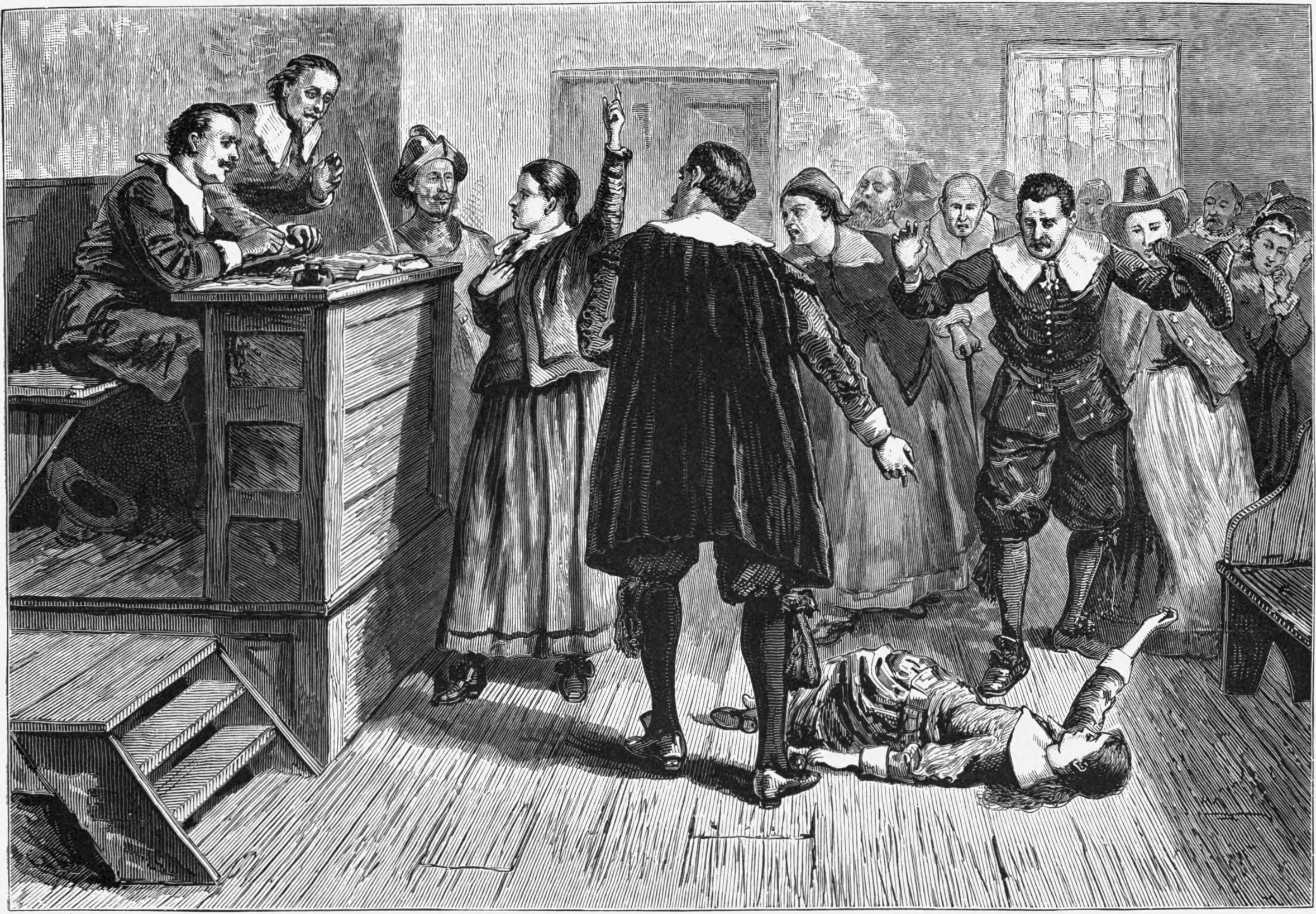Twenty individuals were executed for the “crime” of witchcraft at the Salem Witch Trials more than 300 years ago. The worst part? the Salem Witch Trials took place by “the law,”
Being a witch, as defined by English law as possessing supernatural abilities granted by the Devil, was illegal more than three centuries ago in the American colonies. However, the most horrific witch-hunt against innocent individuals in Colonial Massachusetts didn’t happen until a confluence of government incompetence, widespread fear, and Puritan religious and social laws against a backdrop of political and economic instability.
During the Salem Witch Trials of 1692, over 200 people were accused of practicing witchcraft. Twenty of those people were executed, most by hanging. One man was pressed to death under heavy stones. Dozens suffered under inhumane conditions as they waited in jail for months without trials; many of the imprisoned were also tortured, and at least one died in jail before the hysteria abated in 1693.
A significant portion of the tragedy surrounding the Salem Witch Trials can be attributed to the court’s and the laws’ shortcomings at the time: laws that recognized as admissible evidence things like dreams, visions, and even the testimonies of spirits. And a court that upheld charges that, if they weren’t so clearly unfair, would be funny in retrospect.
Understanding the historical context of the Salem Witch Trials is essential. As a Puritan settlement, Salem was home to a disciplined and devout population. Life was hard and everyone abided by the rules strictly. Salem was plagued by financial difficulties, land disputes, and illness in the late 1600s.
The Start of Trouble
The Salem Witch Trials began when some young girls in the village started acting strangely. They were having fits, saying weird things, and acting like they were possessed. People didn’t understand what was happening, so they started to think it must be because of witchcraft. Soon, they accused three women of being witches: Tituba, who was a slave, Sarah Good, who was poor, and Sarah Osborne, who wasn’t very popular.
Things Get Worse
Once the accusations started, they didn’t stop. More and more people were accused of being witches, and the whole village was scared. The trials weren’t fair. People weren’t given a chance to defend themselves, and the judges believed strange stories without any proof. In just a few months, twenty innocent people were killed. Most of them were hanged, and one person was crushed to death with heavy stones.
Aftermath and Lessons
After the Salem Witch Trials ended, Salem was left feeling sad and guilty. People realized they had made a big mistake by accusing innocent people. The trials showed how fear and panic can make people do terrible things. They also made people think about how important it is to treat everyone fairly, no matter what they believe.
What It Means Today
The Salem Witch Trials still matter today because they teach us important lessons. They remind us to be careful and not to believe everything we hear, especially when people are scared. They also remind us to be fair and kind to everyone, even if we don’t understand them or if they’re different from us.
Conclusion
The Salem Witch Trials were a dark time in American history, but they’re also a reminder of the power of fear and the importance of fairness and kindness. By learning from the mistakes of the past, we can make sure they never happen again. As we remember the victims of the Salem Witch Trials, let’s also remember to treat everyone with respect and understanding, no matter what.
Source:
The Salem Witch Trials: A Day-by-Day Chronicle of a Community Under Siege” by Marilynne K. Roach and “The Witches: Salem, 1692” by Stacy Schiff.

